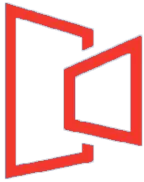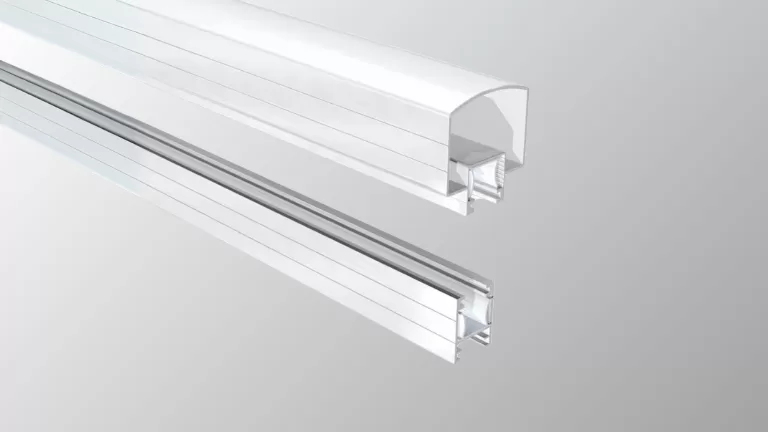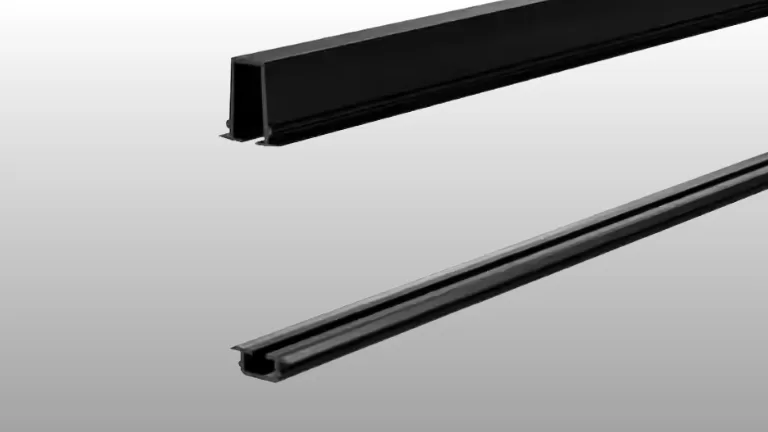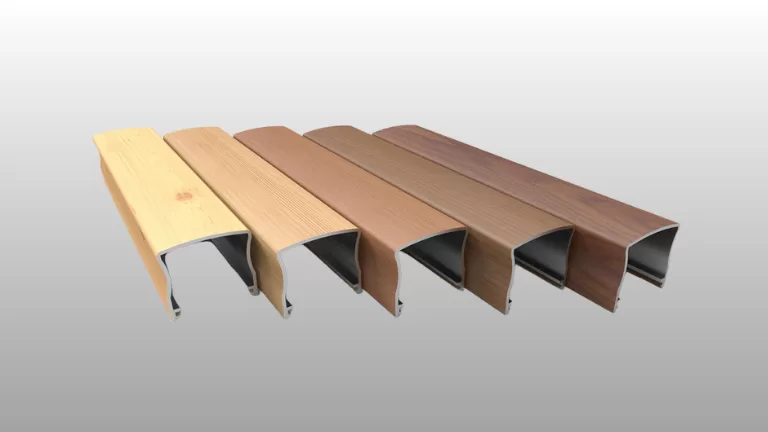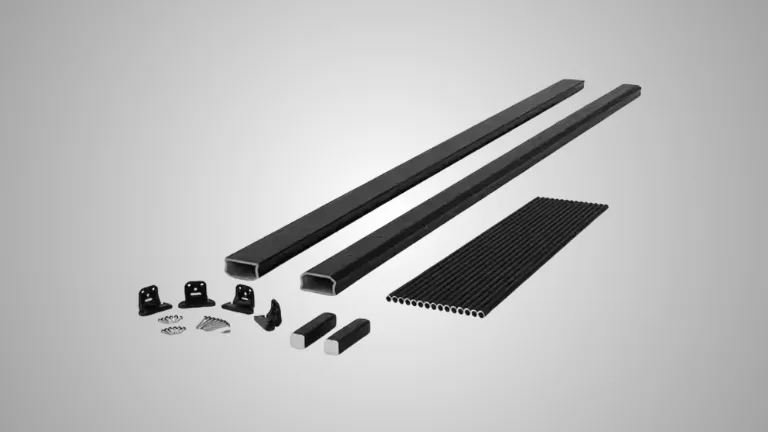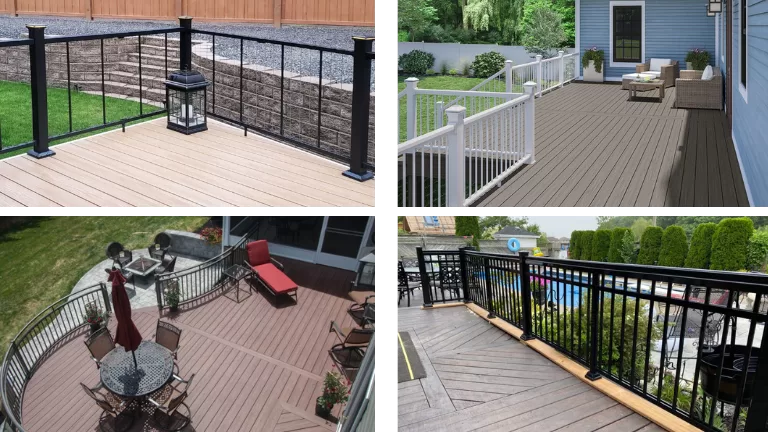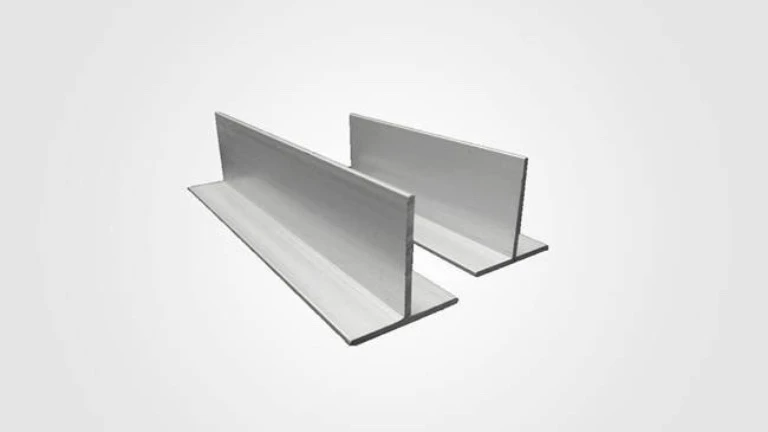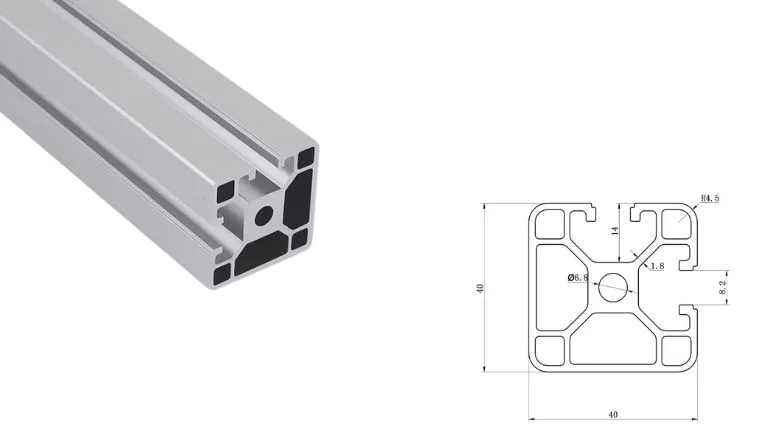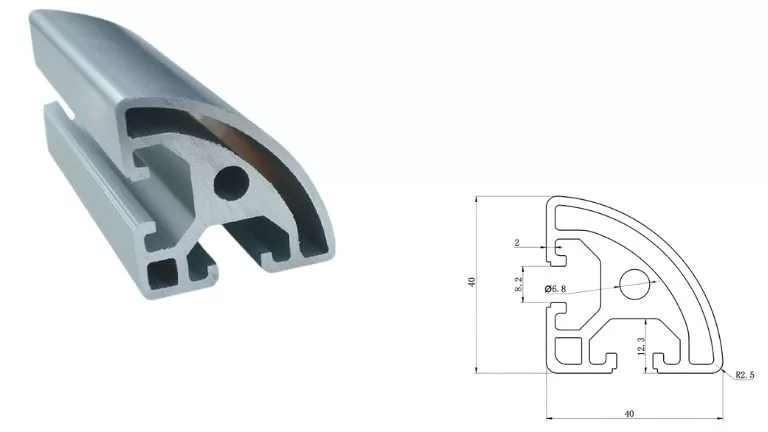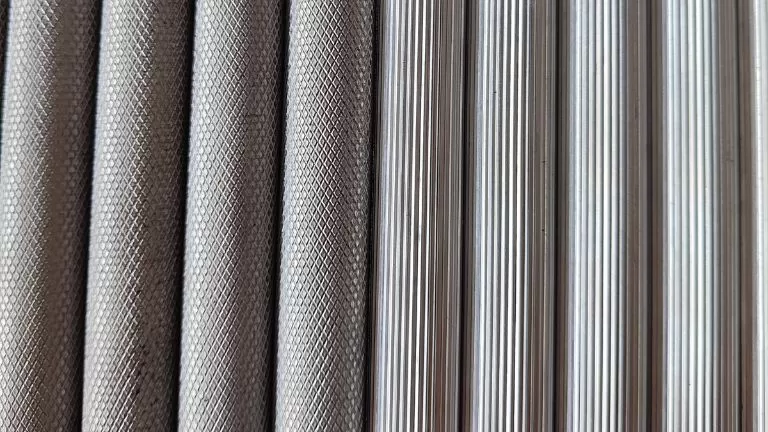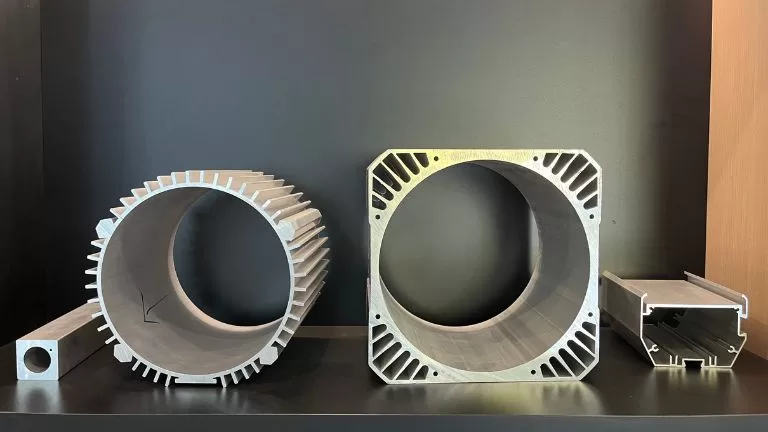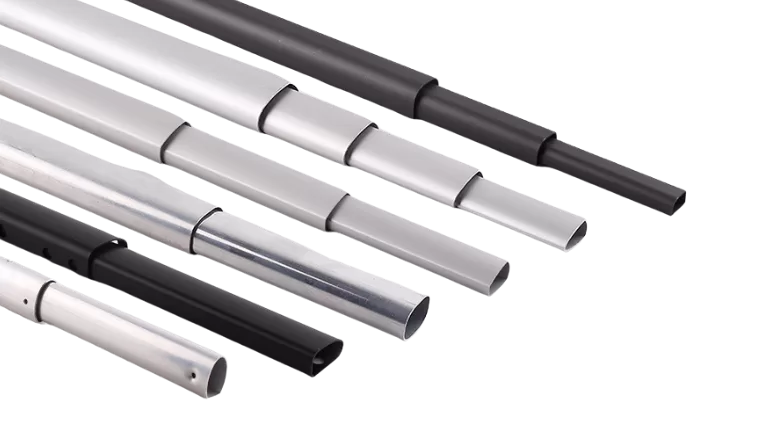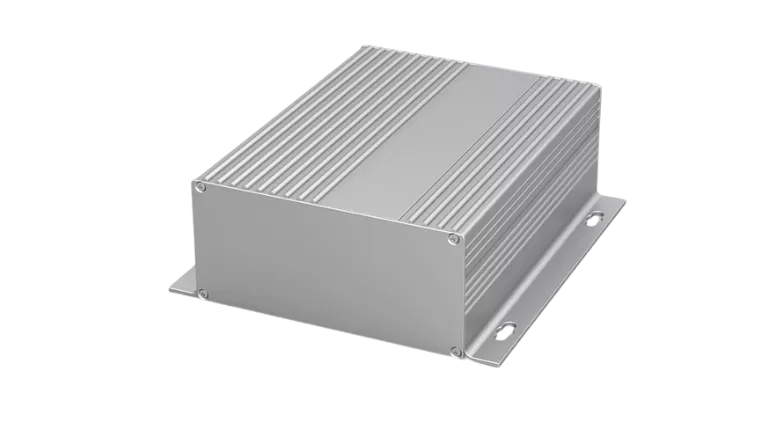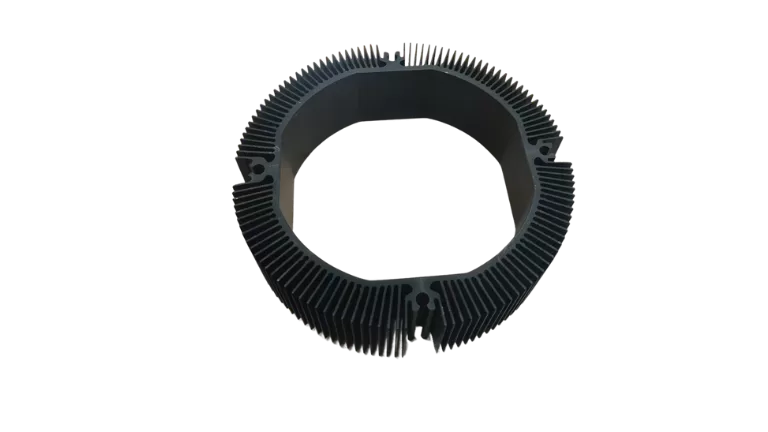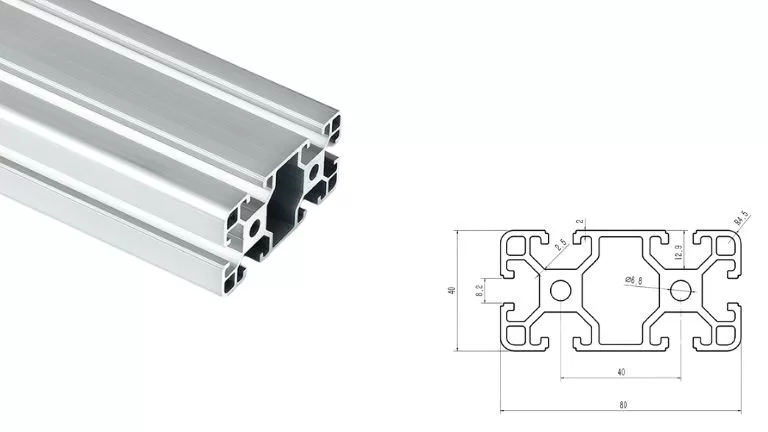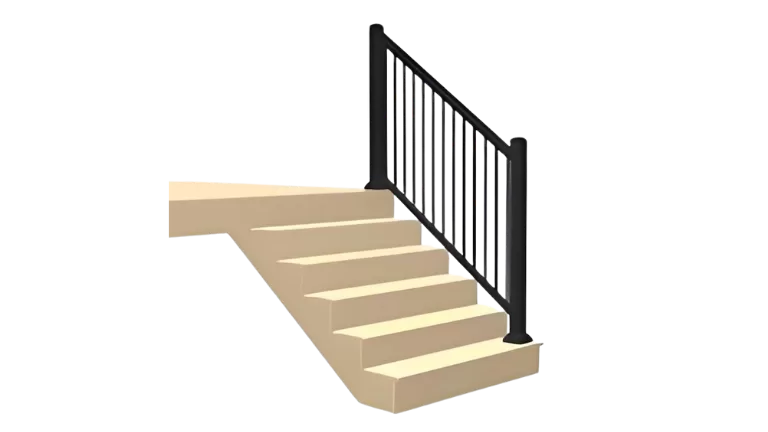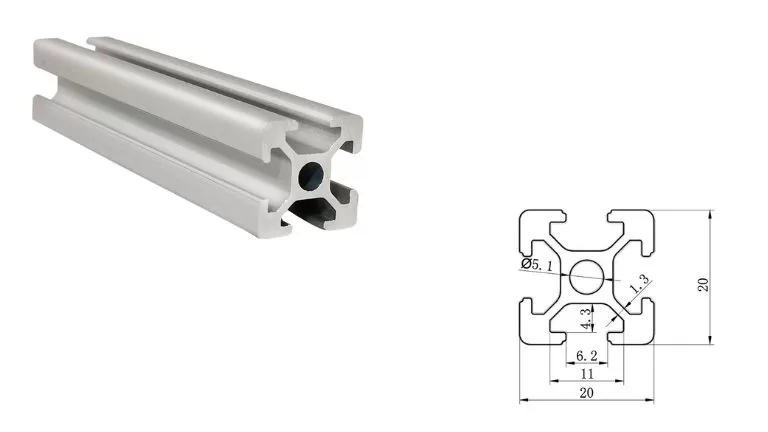Custom Premium Deck Railing Aluminum Section
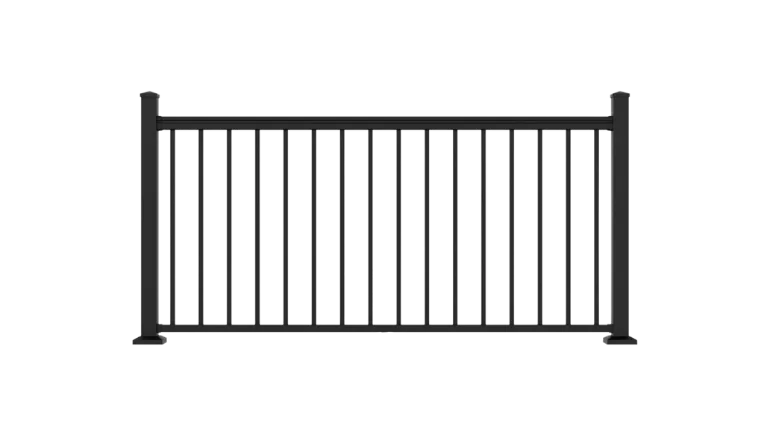
Aluminum deck railing is a secure and decorative barrier system, primarily made from extruded aluminum, and is commonly installed along the edges of decks, patios, balconies, or outdoor staircases. Its lightweight nature, excellent corrosion resistance, and low maintenance requirements make it a preferred choice for residential, commercial, and marine applications.
Available in a variety of designs and finishes, aluminum deck railing not only improves the safety and modern look of outdoor spaces but also withstands harsh weather conditions and requires minimal upkeep.
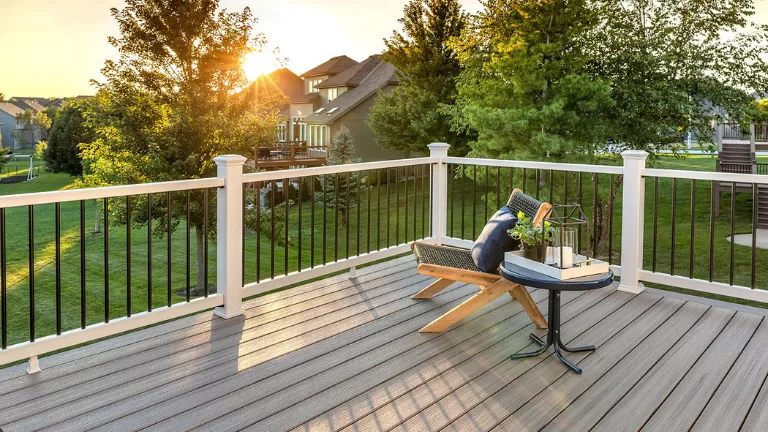
Straight Aluminum Deck Railing
Straight aluminum deck railing features a linear design, making it ideal for installations along flat edges such as the perimeters of decks, patios, or balconies. Its clean, modern lines provide a sleek aesthetic that complements a variety of architectural styles. This type is the most common and straightforward to install, often chosen for its simplicity and cost-effectiveness.

Curved Aluminum Deck Railing
Curved aluminum deck railing is designed to follow the contour of rounded or uniquely shaped decks and outdoor spaces. The elegant arcs add a distinctive, contemporary touch and can enhance the overall visual interest of the area. This style requires custom fabrication to match the precise radius or shape of the installation site, making it a popular choice for more intricate or luxurious projects.
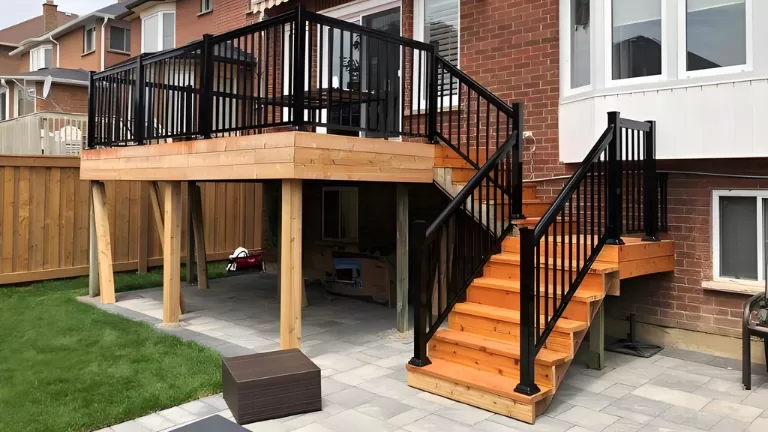
Stair Aluminum Deck Railing
Stair aluminum deck railing is specifically engineered for use along staircases, providing both safety and style on sloped surfaces. The railing system is designed to match the angle of the stairs, ensuring consistent height and secure support throughout the ascent or descent. This type often includes adjustable components to accommodate different stair pitches and is essential for meeting safety codes and regulations.
Design and Customization
| Option | Description |
|---|---|
| Material | 6061, 6063 aluminum, or custom alloys |
| Color | Black, White, Bronze, Silver, or custom RAL colors |
| Infill Type | Glass panels, steel cables, metal decorative panels, or traditional balusters |
| Handrail Style | Flat top, round top, or various decorative profiles |
| Installation | Surface mount (fixed on the deck surface) or side mount (fixed to the edge of the deck) |
Typical Applications
-
Vessels and Docks: Designed to withstand salt spray corrosion and comply with maritime safety standards such as IMO and SOLAS.
-
Building Balconies and Terraces: Offers an attractive appearance while meeting building codes, including requirements for height and spacing.
-
Industrial Platforms: Features optional textured surfaces for added slip resistance and enhanced safety.
-
Pool Fencing: Built to resist corrosion from chlorinated water, with a smooth, burr-free finish for enhanced safety.
Surface Finishes
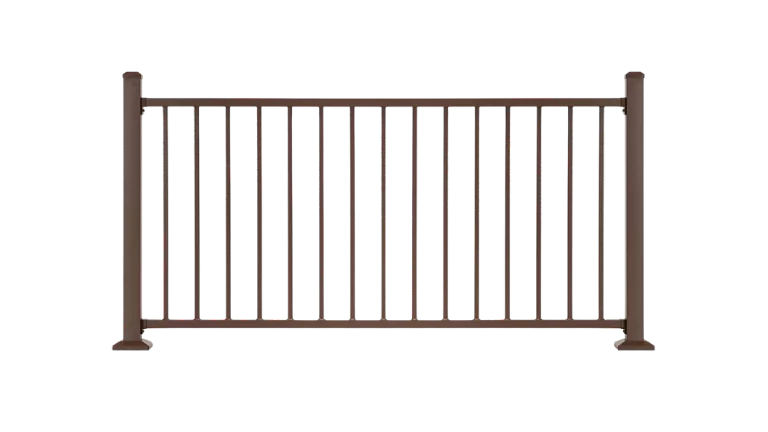
Anodizing
Anodized aluminum railings have an enhanced oxide layer that greatly improves corrosion resistance, making them ideal for coastal or marine environments exposed to salt and moisture. The anodized finish also gives a sleek, modern look and extends the railing’s lifespan.
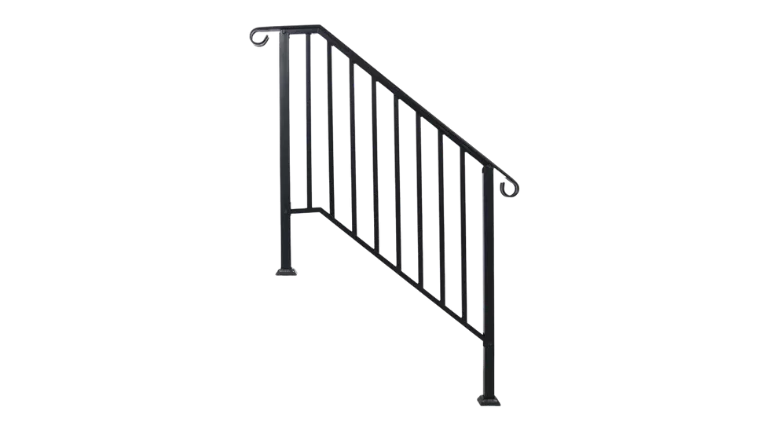
Powder Coating
Aluminum deck railings are often finished with a durable powder coating available in a wide variety of colors. This treatment offers excellent resistance to ultraviolet (UV) rays and scratches, ensuring that the railing retains its appearance and performs well over time with minimal maintenance.
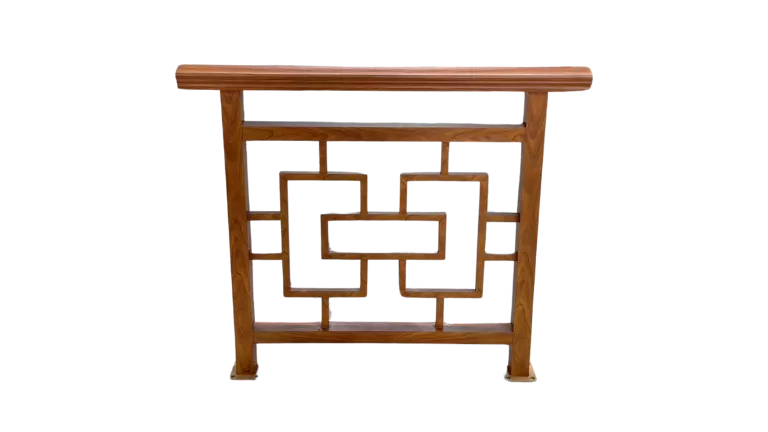
Wood Grain Transfer
This finishing technique gives aluminum railings a wood-like look while preserving the durability of metal. It’s ideal for projects needing the warmth of wood with low maintenance and long life. The finish resists fading, peeling, and weathering, making it perfect for outdoor use.
Material Selection
Aluminum deck railings are commonly made from 6061 or 6063 aluminum alloys, which are well-suited for architectural and structural applications. We also offer other material options to accommodate different project requirements and design preferences.
1. 6061 aluminum alloy is valued for its excellent strength, durability, and corrosion resistance, making it suitable for railings that may bear heavier loads or be exposed to demanding outdoor environments.
2. 6063 aluminum alloy is known for its exceptional extrudability and smooth surface finish, which makes it ideal for creating elegant, detailed railing profiles. Both alloys have a density of approximately 2.70 g/cm³ and deliver reliable, long-lasting performance in outdoor installations.
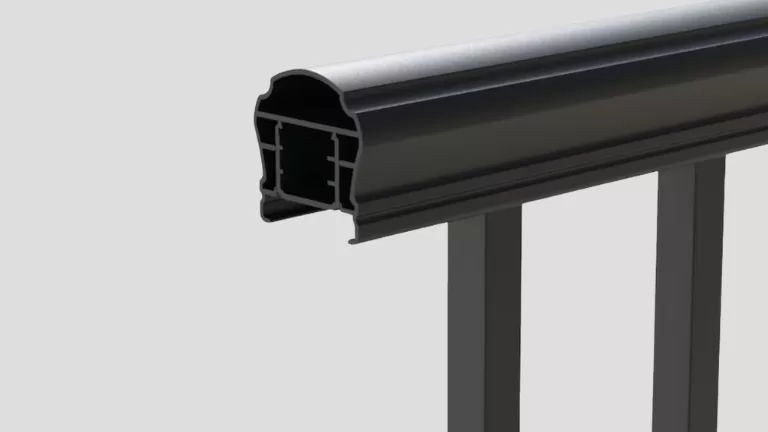

Core Components and Structure
1. Top Rail:
Horizontally positioned for hand support; the height must comply with safety regulations (commonly 36–42 inches, or approximately 91–107 cm, in the United States).
2. Bottom Rail:
A horizontal support structure that enhances the stability of the railing; in some designs, this component may be omitted.
3. Posts:
Installed vertically on the deck surface to support the top and bottom rails; the spacing is generally 4–6 feet (about 1.2–1.8 meters), but should be adjusted according to load requirements and building codes.
4. Balusters/Vertical Pickets:
Vertically arranged between the rails to prevent people from falling or objects from dropping; spacing typically does not exceed 4 inches (about 10 cm) to meet safety standards.
5. Fasteners and Accessories:
Includes screws, clips, flange bases (for securing to the ground), decorative caps, etc., to ensure structural stability and aesthetic appearance.
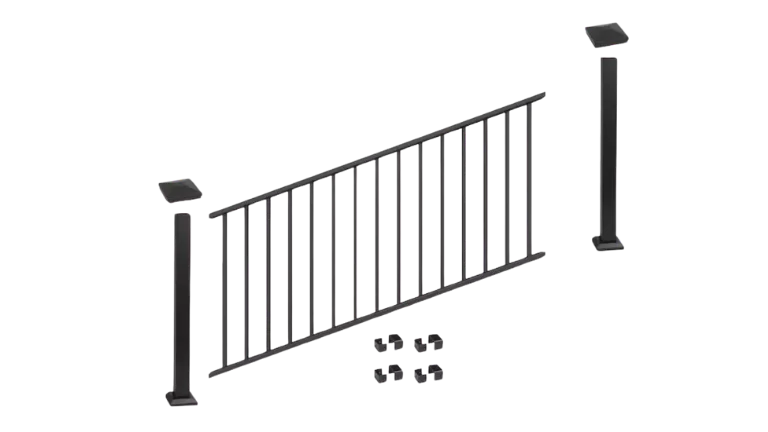
Main Advantages
1. Outstanding Corrosion Resistance
Aluminum naturally forms a protective oxide layer, making it highly resistant to rain, humidity, and salt—ideal for coastal or high-humidity areas without the need for frequent repainting.
2. Lightweight and Strong
At only one-third the weight of steel but with comparable strength, aluminum railings are easy to transport and install while providing solid durability.
3. Versatile Design Options
Offers various styles and finishes such as powder coating, anodizing, and wood grain effects. Supports different shapes to fit a wide range of deck layouts.
4. Low Maintenance
Requires minimal upkeep—simply clean with a damp cloth, saving time and costs over the long run.
5. Eco-Friendly and Safe
Fully recyclable material with a smooth surface that helps prevent accidental scratches.
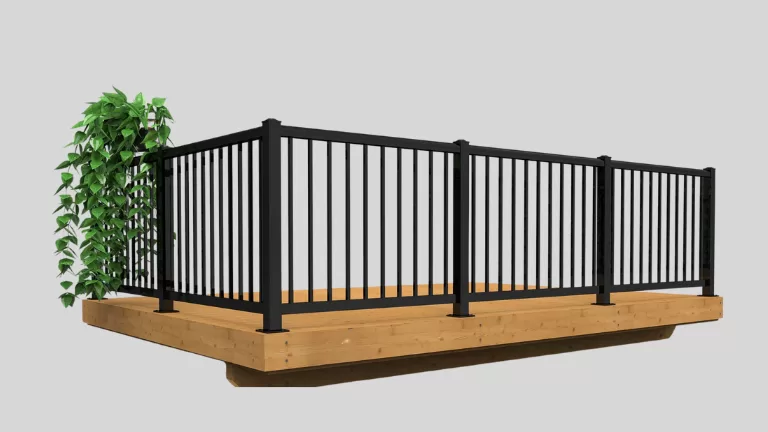
Comparison with Other Railing Materials
Please provide a valid CSV file.
Our Factory
Our factory is equipped with 40 extrusion production lines to efficiently manufacture aluminum profile. We have one anodizing and electrophoresis line, along with two vertical spraying machines and two horizontal spraying machines for surface treatment. Additionally, we operate two sandblasting machines and six wood grain transfer printing lines, enabling us to provide various aesthetic finishes. To support our production, we also have furnaces for casting aluminum bars, aging furnaces, annealing furnaces, water cooling treatment equipment, and machining equipment, ensuring comprehensive capabilities for high-quality output.
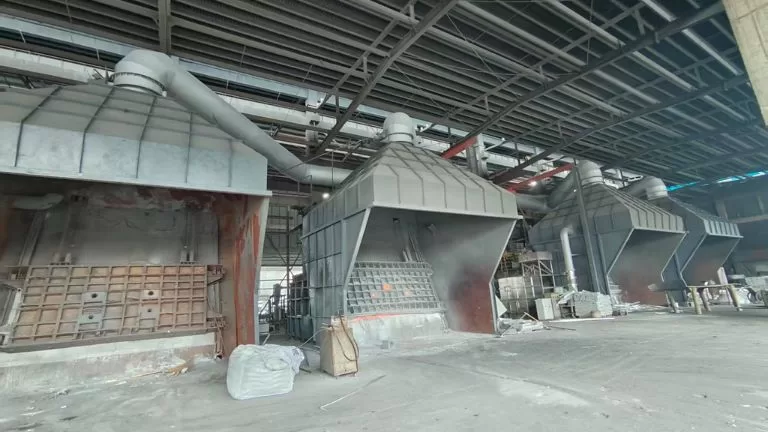
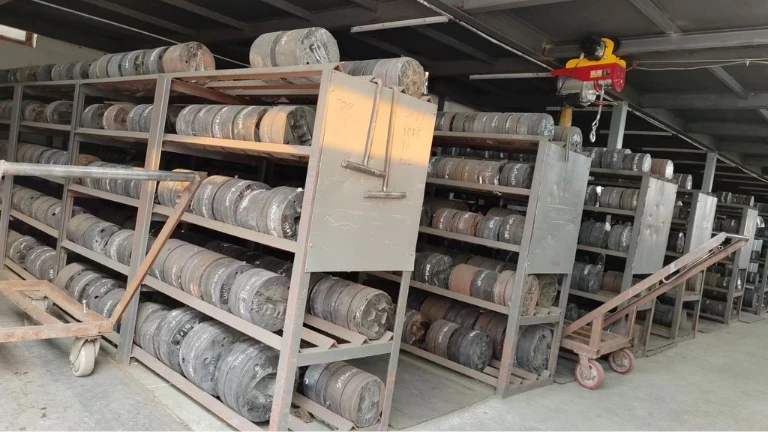
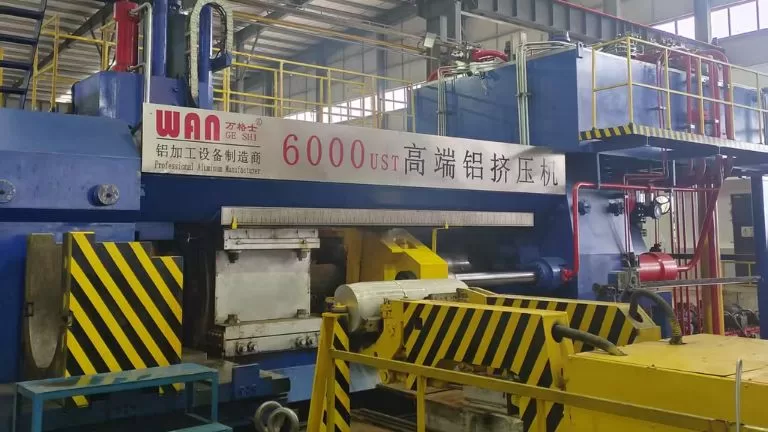
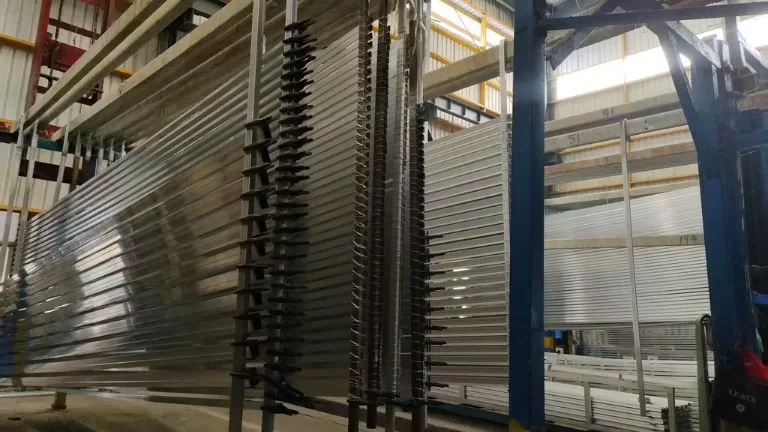
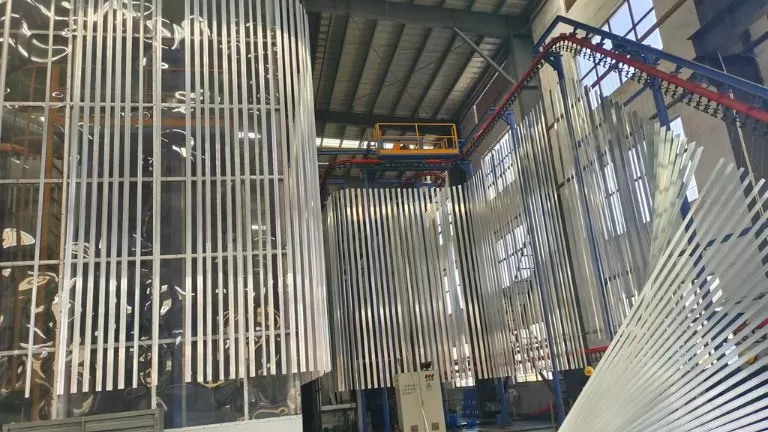


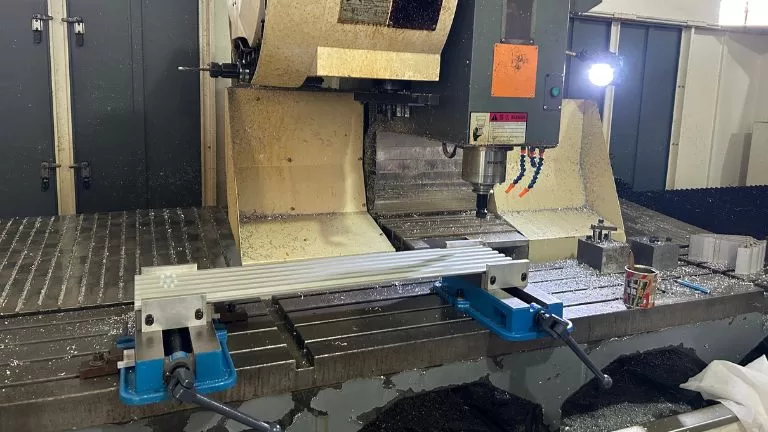
RFQ of Aluminum Deck Railing
1. Railing height (typically no less than 90 cm or 110 cm) and spacing (gaps less than 10 cm) must comply with local building codes and safety standards.
2. Stair and balcony railings should be securely anchored, and connectors are usually recommended to be made of stainless steel to prevent corrosion.
1. Aluminum railings require little special maintenance—occasional cleaning and regular inspection of connections are sufficient.
2. High-quality aluminum railings can typically last 20–30 years without significant aging or performance decline.
The heat treatment of aluminum extrusions determines their mechanical properties, strength, and suitability for specific applications. Among the various heat treatment methods, T5, T6, and T66 are the most commonly used. Here’s an in-depth look:
| Heat Treatment State | Cooling Method | Strength | Key Features and Benefits | Applications |
|---|---|---|---|---|
| T5 | Air cooling (fan) | Moderate | Adequate strength, good dimensional stability, used for architectural purposes. | Windows, doors, curtain walls, building structures. |
| T6 | Water quenching (fast) | High | Higher strength and hardness, ideal for industrial and structural uses. | Automotive, aerospace, machinery, transport parts. |
| T66 | Water quenching (fast) | Very high | Optimized mechanical properties for higher strength and performance demands. | Automotive, rail transportation, high-end machinery. |
Other Heat Treatment States
- T4: Solution heat-treated and naturally aged. Used in applications requiring intermediate strength and enhanced formability.
- T7: Overaged for better stress-corrosion resistance, often used for aerospace and marine purposes.
- O (Annealed): Very soft condition suitable for extensive forming or bending requirements.
- F (As-Fabricated): No heat treatment applied, used in non-critical applications with low strength requirements.
. Anodizing (Oxidation)
- Common Colors:
Natural silver
Black
Champagne
Light bronze
Dark bronze
Gold
2. Electrophoresis Coating (E-Coating)
- Common Colors:
Black
Champagne
Light bronze
Dark bronze
Custom metallic colors
3. Powder Coating
- Colors:
Can match any color based on the RAL color chart.
Offers textures like matte, gloss, satin, and custom finishes.
4. PVDF Coating (Polyvinylidene Fluoride)
- Colors:
Also customizable using the RAL color chart.
High-end finishes with matte or glossy effects.
5. Wood Grain Transfer Printing
- Colors and Patterns:
Mimics various wood types (e.g., oak, walnut, teak, mahogany).
Custom patterns available based on provided samples.
6. Film Lamination
- Colors and Patterns:
Includes textures like marble, leather, and solid colors.
Custom finishes and patterns based on provided samples.
Pre-Treatment Options (Impact on Final Color)
- Brushing/Polishing: Produces smooth or reflective metallic surfaces.
- Sandblasting: Adds a rough, matte texture before the final surface treatment.
We provide a wide range of machining services for aluminum extrusions to meet specific requirements. These include cutting off/section removal, slotting, drilling holes, tapping threads, bending, and localized stamping to create deformations. For example, we can trim extruded profiles to custom lengths, mill precise grooves, create threaded holes for fasteners, bend profiles into specific shapes, or apply localized stamping to achieve custom forms or deformation.
In addition to these processes, we also offer TIG/MIG welding to join aluminum components for a solid structure. Furthermore, our services include assembly of common accessories, such as brackets, corner connectors, screws, hinges, end caps, and rubber seals, providing complete and ready-to-install profile solutions tailored to your project needs. This ensures that we can handle everything from simple cuts to highly customized fabrication and assembly, all with precision and efficiency.
For custom aluminum extrusion projects, we accept a variety of drawing formats, including CAD files, STEP files, and PDF files. However, for extrusions that require additional machining processes, it’s recommended to provide STEP files, as they ensure precise 3D modeling for machining accuracy.
While PDF files are acceptable, converting them into CAD drawings may result in the loss of certain details, requiring us to manually redraw the design, which could increase lead time. For the fastest and most accurate quotation, we recommend providing CAD files (e.g., DWG/DXF) and STEP files to ensure efficient design evaluation and pricing.
Mold fees are an essential part of the custom aluminum extrusion process. Since every order requires a uniquely designed mold tailored to specific requirements, these molds cannot be used for other products. Therefore, the mold fee is necessary and non-negotiable.
We require 100% upfront payment of the mold fee before mold development begins to ensure timely production. However, as a token of appreciation for your support, we offer a refund of the mold fee or equivalent discounts once the order reaches a certain production volume. Specific policies can be discussed based on your order volume and collaboration details.
Our minimum order quantity (MOQ) varies depending on the size of the product. For smaller-sized products, the MOQ is typically 500kg, while for larger-sized products, it is 2 tons.
We will specify the exact MOQ requirements during the quotation process. If your order quantity does not meet the MOQ, we can still arrange production, but an additional fee will be applied to cover mold preheating and production setup time. Rest assured, this extra fee will be reasonable, and we aim to keep it as minimal as possible to ensure smooth cooperation.
Packaging can be customized according to your needs. Options include using protective film or paper to separate and protect the surface, or foam film for additional surface protection. Products can be palletized or packed into cartons, and the quantity per pallet or carton can be specified by the customer.
The standard packaging involves bundling several pieces together with plastic wrap and then securing them onto pallets. Any packaging requirements beyond the standard will be accommodated, and the associated costs will be clearly provided to the customer.
Mold production typically takes 7 days. After the sample is confirmed, producing a full container load of 26 tons generally requires 14 days for extrusion alone. If surface treatment is required, an additional 3 days will be needed. For machining, extra time will be required depending on the complexity and volume of the machining work. The exact additional time for machining will be determined based on the specific processing requirements.
Aluminum profiles are naturally corrosion-resistant due to the formation of a thin, protective oxide layer when exposed to air or water. This oxide layer is stable and self-repairing, meaning that even if the surface is scratched or cut (such as at exposed ends or during processing), the aluminum will not rust or corrode like iron or steel. Instead, the exposed areas will quickly form a new oxide layer, providing continuous protection against further oxidation.
With proper design, installation, and maintenance, aluminum profiles can last for decades, even in challenging environments. For example, untreated aluminum can easily withstand 20-30 years in outdoor applications, while profiles with surface treatments like anodizing or powder coating can last even longer, often exceeding 50 years. This makes aluminum an excellent choice for applications where durability and long-term performance are essential.
The price of aluminum profiles consists of several components: raw material costs, extrusion processing fees, surface treatment fees, machining costs, and additional packaging fees. Among these, the cost of aluminum as a raw material tends to fluctuate frequently, while other fees remain relatively stable. Due to these fluctuations, our quotations are typically valid for 7 days.
Pricing can be structured in different ways depending on the product and requirements. It can be calculated by weight (e.g., cost per ton), by length (e.g., cost per meter), or by piece (e.g., cost per unit). For products involving extensive machining, such as heat sinks, pricing is generally calculated on a per-piece basis to accurately reflect the additional processing costs. This flexible pricing approach ensures the quote is tailored to the specific needs of the customer.
We can manufacture aluminum profiles in compliance with technical requirements that meet European standards (EN), American standards (ASTM/AA), or other standards as specified by the customer. Custom production is tailored to ensure that the profiles meet the specific standard requirements requested.
Our production equipment is designed for the metric system. If the drawings provided are in the imperial system, we will convert them into metric units for production to ensure accuracy.
It is important to note that while we can machine imperial-threaded holes for fasteners, if you require us to supply matching imperial fasteners, they may not always be available in stock. Custom orders for imperial fasteners typically require a large volume for production. Please consider this when planning your project.
